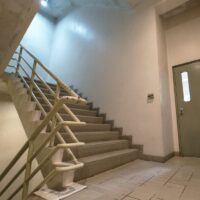Understanding New York Building Codes and Stairway Safety Regulations

New York is a bustling metropolis where millions of people live, work, and visit daily. With the city’s high population density and constant construction, maintaining strict building codes and stairway safety regulations is essential. These regulations are designed to ensure the safety and well-being of residents and visitors alike. If you’ve been injured in a slip and fall, trip and fall, or other stairway accident in New York City, it’s important to understand how building codes and regulations could apply to your case… or at least you should get an attorney who understands these things already.
Learn more about New York building codes and stairway safety regulations below, and contact Leandros A. Vrionedes, P.C. if you or a loved one has been hurt in a stairway accident in NYC.
The Importance of Building Codes in New York
Building codes in New York are a set of standards that govern the design, construction, alteration, and maintenance of buildings. These codes are enforced to ensure the safety, health, and welfare of the public. They cover various aspects, including structural integrity, fire safety, accessibility, and energy efficiency. For stairways, specific regulations are in place to prevent accidents and injuries, which are among the most common causes of personal injury claims in the state.
Key Stairway Safety Regulations
Stairway safety regulations are a crucial part of New York’s building codes. These regulations specify the design, construction, and maintenance requirements for stairways in residential and commercial properties. Key elements include:
1. Stairway Dimensions
Stairways must have consistent dimensions to prevent tripping hazards. The rise (vertical height) and run (horizontal length) of each step must be uniform. In New York, the maximum riser height is generally 8 inches, and the minimum tread depth is 9 inches.
2. Handrails
Handrails are mandatory on stairways to provide support and stability. New York codes require handrails on both sides of the stairway if it is more than 44 inches wide. The height of handrails should be between 34 and 38 inches from the tread nosing.
3. Guardrails
Guardrails prevent falls from elevated areas. Stairways with open sides must have guardrails to protect against accidental falls. The minimum height for guardrails is typically 42 inches.
4. Lighting
Proper lighting is essential for stairway safety. Stairways and stairwells must be well-lit to prevent trips and falls. This includes both natural and artificial lighting sources.
5. Non-Slip Surfaces
Stair treads must have non-slip surfaces to reduce the risk of slipping. Materials such as rubber, carpet, or textured finishes are commonly used to enhance traction.
Compliance and Liability
Property owners and managers are responsible for ensuring their buildings comply with New York’s building codes and stairway safety regulations. Failure to comply can result in severe consequences, including fines, legal liability, and increased risk of accidents. For instance, if a person is injured due to a code violation, the property owner may be held liable for damages.
What to Do if Injured Due to Non-Compliance With Building Codes and Regulations
If you or a loved one has been injured due to a stairway accident caused by non-compliance with building codes, it is crucial to take immediate action. Here are the steps to follow:
- Seek Medical Attention. Your health and safety should be your top priority. Seek medical attention immediately to address any injuries.
- Document the Scene. Take photographs and gather evidence of the accident scene, including the stairway and any visible code violations.
- Report the Incident. Notify the property owner or manager about the incident. Ensure that the report is documented in writing.
- Consult a Personal Injury Lawyer. Contact an experienced personal injury lawyer, such as Leandros A. Vrionedes, P.C., to discuss your case. A lawyer can help you understand your legal rights and pursue compensation for your injuries.
How Leandros A. Vrionedes, P.C. Can Help
Leandros A. Vrionedes, P.C. is a dedicated New York personal injury law firm with extensive experience handling cases involving building code violations and stairway accidents. Our team understands the complexities of New York’s building codes and can help you navigate the legal process to seek justice and compensation.
We offer personalized legal services tailored to your specific needs and circumstances. Our commitment to our clients ensures that you receive the support and representation necessary to achieve a favorable outcome.
Contact Leandros A. Vrionedes, P.C. After a Stairway Accident in New York City
Understanding New York’s building codes and stairway safety regulations is essential for property owners, tenants, and visitors. These regulations are in place to prevent accidents and ensure public safety. If you have been injured due to non-compliance with these codes, seeking legal assistance from a knowledgeable personal injury lawyer is crucial. Leandros A. Vrionedes, P.C. is here to help you every step of the way, ensuring that your rights are protected and that you receive the compensation you deserve. Call us today at 212-889-9362 for a free consultation.


